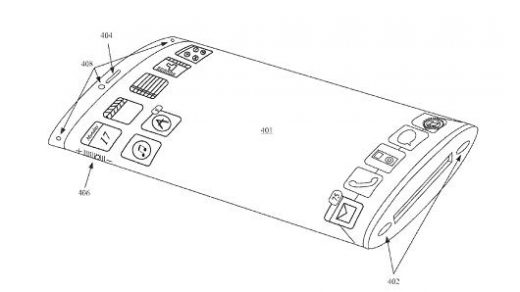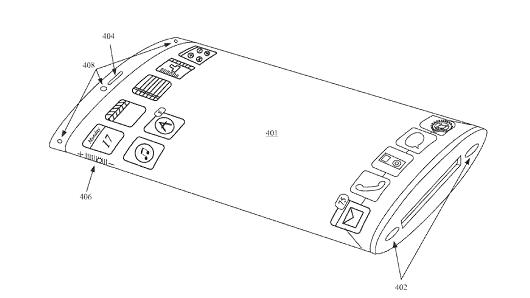Apple Wrap-around Screen Patent Would Lengthen Viewable Search Results
Apple patents show future iPhone could have a wraparound display, augmented reality
A future iPhone could have a curved wrap-around screen, according to a patent awarded to Apple on Tuesday, while a separate patent highlighted the technology giant’s interest in augmented reality (AR).
In one filing with the United States Patent and Trademark Office (USPTO), Apple outlines an electronic device with “wrap around display”. It says the typical rectangular form factor leaves “the sides and rear surfaces of the device unused or at best configured with buttons and switches with fixed location and functionality”.
Apple said that a flexible display can be folded in such a way “to form a continuous loop such that images (still or video) can be presented in a wrap-around manner in which the images appear to be presented in a continuous loop”.
Part of the rationale is to increase screen real estate and Apple said its design could let there be five icons across the screen per row, rather than four on its current iPhone 6s models.
The volume control would not be a physical button. Instead, it would be a feature on the screen that will expand when a user holds their finger on it. And “a multi touch gesture along one of the sides could instead act as a method of locking and unlocking” the device instead of a button.
Apple’s patent said the display could be made of plastic or glass. It outlined how a bendable display can be inserted in the glass enclosure to present images on the glass. So the device would have two screens.
“In this way, an illusion of depth perception can be presented mimicking a 3D experience,” the patent explained.
Augmented reality
A second patent awarded to Apple on Tuesday showed its interest in augmented reality. This technology allows a device to overlay images on to a real setting.
In the example given in the patent, a person could hold up a device to a painting in a museum and lots of related information could overlay the image.
Apple’s patent relates to a “transparent display” like glass. In one iteration, the patent describes a small transparent screen with an opaque housing surrounding it which will hide the electronic enclosure. But it doesn’t necessarily need to be a handheld device.
The U.S. technology giant explains in an example that its augmented reality screen technology could be used in a tour bus so information is overlaid on monuments as it drives around.
“These displays may present overlays that impart information about locations viewable from the bus.”
Augmented reality is a big focus area for technology companies. Last week, Lenovo released an augmented reality smartphone powered by Google’s technology called Project Tango.
Companies file patents frequently and it doesn’t mean the technology will ever become reality.
(15)




